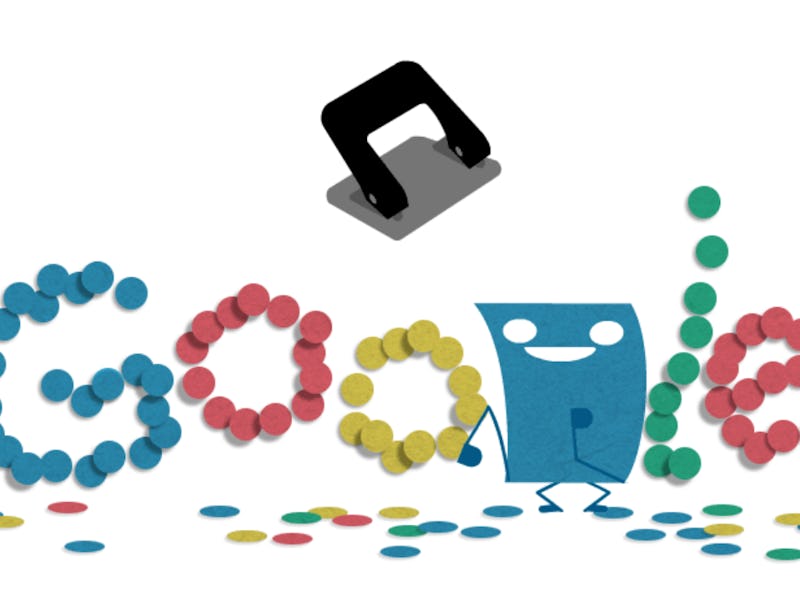Why Google is Celebrating 131 Years of the 'Essential' Hole Punch
The hole punch has a surprising history.

Google marked 131 years of the hole punch on Tuesday, celebrating the invention’s anniversary with a doodle on its homepage by Dutch designer Gerben Steenks. Ever since a German engineer first patented the trusty gadget, it’s punched well above its weight to become a common sight on office desks around the world.
The doodle celebrates the day when Friedrich Soennecken filed his patent for a spring-supported lever system that makes holes in a wad of paper with ease. Soennecken also invented the ring binder, ideal for holding newly-holed pages together in a book-like collection.
To mark the occasion, Google’s team has written a passage to celebrate the tool:
It’s a familiar scene with a familiar tool: the gentle rat-tat-tat on the table as you square up a dangerously thick stack of papers, still warm from the printer. The quiet anticipation and heady uncertainty as you ask yourself the ultimate question: can it cut through all this? The satisfying, dull “click!” of the blade as it punches through the sheets. The series of crisp, identical holes it produces, creating a calming sense of unity among an otherwise unbound pile of loose leaf. And finally, the delightful surprise of the colorful confetti byproduct – an accidental collection of colorful, circular leftovers.
View the doodle in all its animated glory below:
Google's doodle.
However, it’s not quite clear that Soennecken was first to the punch. In 1885, Benjamin Smith invented the “conductor’s punch” in Massachusetts, a similar invention specifically designed for train conductors. This punched one hole through train tickets, as a method of validating them at a time when travel was becoming increasingly popular. The collector at the bottom held onto the scraps, in order “to prevent passengers on railroad-trains and other public conveyances from fraudulently reinserting in their passage-tickets the cuttings removed:”
Smith's conductor's punch.
Whether or not he was first with the hole punch, Soennecken had a huge effect on the stationery and printing industry. Born in Germany in 1848, he also invented the round writing calligraphy style, and the pen that made it possible. This proved popular with many writers of the day, including philosopher Frederich Nietzsche. Soennecken died in Bonn in 1919.
It’s not the first time Google has used its homepage to bring new attention to a historical event. Previous doodles covered the astrophysicist Subrahmanyan Chandrasekhar, the explorer Fridtjof Nansen, and the discovery of the Antikythera Mechanism